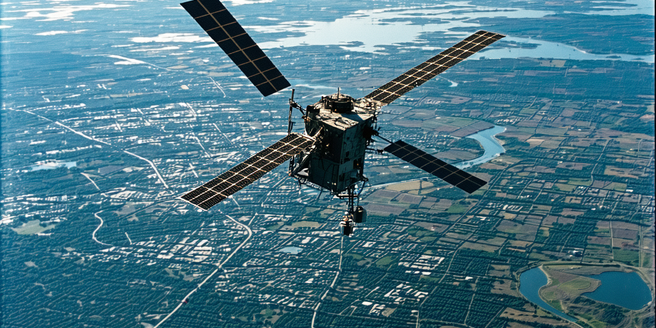Satellite Internet: Understanding Connectivity

The Basics of Satellite Internet Technology
Satellite internet works by transmitting and receiving data through signals from satellites orbiting the Earth. It typically involves a satellite dish, a modem, and a satellite in space that acts as a relay. Unlike traditional internet services, which rely on terrestrial infrastructure like cables and towers, satellite internet provides connectivity regardless of the location. This technology is crucial for remote and rural areas where laying cables is not feasible. The data rendered from a user is sent via the dish to a satellite, then transmitted to a network operations center, and finally directed to the internet. Although satellite internet has vulnerabilities like latency and weather interference, its ever-expanding coverage and ongoing advancements make it a viable option in areas lacking traditional infrastructures.
How Satellite Internet Differs from Traditional Broadband
Satellite internet and traditional broadband differ fundamentally in infrastructure and performance. While traditional broadband uses cable, DSL, or fiber-optic connections that rely on an extensive land-based network, satellite internet depends on satellites orbiting in space. This infrastructural difference contributes to higher latency in satellite internet, as signals have to travel a greater distance to reach the satellite and return. However, satellite internet offers unmatched coverage, reaching areas where terrestrial infrastructure is impractical to deploy. This makes it indispensable for rural and remote regions. Conversely, traditional broadband often offers higher speeds and lower latency, making it more suitable for high-demand applications like online gaming and video conferencing if available. Each option presents unique trade-offs and advantages based on location and user needs.
The Advantages of Using Satellite Internet
Satellite internet provides several advantages, especially in underserved areas. Its most notable advantage is its ability to deliver connectivity to remote and rural locations where traditional infrastructure is unavailable or economically unfeasible. This universal coverage is crucial for ensuring that everyone, regardless of location, has access to the internet. Additionally, satellite internet is relatively quick to deploy compared to laying cables for DSL or fiber-optic networks, making it ideal for temporary setups or rapid deployment in disaster-stricken areas. As technology advances, the speeds and reliability of satellite internet are continually improving, further enhancing its appeal. While traditionally associated with slower speeds and higher latency, newer technologies and low Earth orbit satellites promise to significantly mitigate these issues, making satellite internet increasingly competitive.
Common Challenges and Limitations of Satellite Internet
Despite its benefits, satellite internet comes with notable challenges and limitations. One of the primary issues is latency, which is the delay caused by the long-distance signal travel to and from satellites. This can affect real-time applications such as video calls or online gaming. Weather conditions also pose a significant challenge; heavy rain, snow, or storms can interfere with signal transmission, leading to connectivity issues. Additionally, data caps and higher costs can be limitations, as satellite providers often have stricter data usage policies compared to traditional broadband services. These challenges are compounded by potential interference from physical obstructions such as trees or buildings that can block the line of sight required for signal reception. Despite these hurdles, technological advancements aim to address and lessen these issues over time.
The Role of Satellite Internet in Remote Areas
Satellite internet plays a crucial role in bridging the digital divide in remote areas. In locations lacking the infrastructure for traditional internet, satellite technology offers a reliable solution for providing critical connectivity. This is especially vital in places where geographical challenges make laying cables difficult, such as mountainous regions or islands. It enables residents in these areas to access educational resources, telemedicine services, and online communication, fostering community development and inclusion in the global digital community. Satellite internet also supports local businesses, allowing them to operate more efficiently and reach broader markets. By providing a reliable form of connectivity, satellite internet ensures that people in remote areas have opportunities similar to those in urban centers, reducing disparities and encouraging equitable access to information.
Future Trends and Innovations in Satellite Connectivity
The future of satellite connectivity looks promising, driven by innovations aimed at enhancing performance and reducing limitations. Emerging technologies like low Earth orbit (LEO) satellites are revolutionizing the industry by offering lower latency and faster speeds than traditional geostationary satellites. These LEO constellations orbit closer to the earth, significantly decreasing the time it takes for signals to travel. Companies like SpaceX and Amazon are at the forefront of launching large networks of LEO satellites, promising to provide global high-speed internet access. Additionally, advancements in antenna technology are making ground equipment more efficient and user-friendly. As satellite internet technology continues to evolve, we can anticipate further integration of AI and machine learning to optimize network management and delivery. These trends indicate a progressive move towards overcoming current barriers, making satellite connectivity more comparable to terrestrial options.